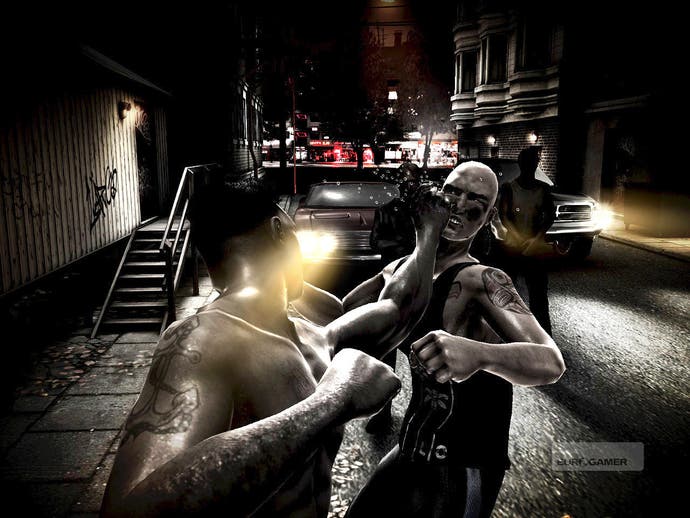The Fight: Lights Out
Knuckle down.
I've barely started playing Sony's gritty Move-enabled beat-'em-up and Danny Trejo is already shouting at me. "YOU'LL BREAK THE GAME IF YOU MOVE AROUND" he barks, his grizzled face looming at the screen like an angry testicle with a moustache.
As a way of defining the limitations of the hardware, it certainly guarantees your attention, even if it rather undermines the "Move" brand.
To be fair, Señor Trejo is talking about your feet. You need to stay in one spot for The Fight to work, but the rest of your body is free to move as much as you like. In fact, it's an absolute requirement – this is a genuinely punishing experience, forcing you to throw real weighty punches rather than the feeble Wii-flicks you may be used to from other motion sensing games.
In construction, it's basically Fight Night but with actual arm-flinging in place of thumbstick twizzles. You create a lumpy, cheap-looking digital mannequin and then try to elevate him through the ranks of underground bare-knuckle boxing, from crude scuffles under railway arches and freeway underpasses all the way up to the heady glamour of rusty cages and loosely organised bear-pit brawls. Expect to see it compared to Fight Club by people who don't understand Fight Club.
Combat itself is, well, interesting. Just as digital imagery has been hampered the "uncanny valley" of human characters that are just inhuman enough to distract, so motion games are faced with their own awkward disconnect. There's just no getting away from the fact that too many motion games ask you to interact with intangible things, and the lack of sensory feedback feels weird and off-putting. It's no surprise that the motion games that generally work best are the ones where hitting or grabbing things isn't part of the gameplay.

After calibrating the PlayStation Eye and grabbing a Move wand in each hand, it's up to you to knock your opponent out. Holding down the big button with the squiggly logo (does that have a name yet?) allows you to tilt the wand to move your fighter, while the trigger enables special attacks like hammer blows to the head, headlocks and other dirty tricks.
The one-to-one recreation of your movements is impressive, but a touch floaty, and the lack of physicality forms a barrier during early play. Punches thrown with shoulder-dislocating force in real life can translate as slow, lazy taps in the game. There can also be a distracting problem with finding the right range, with seemingly perfect shots stopping just short of your foe's face, or your fighter's arms lolloping around like Mr Tickle. Consistency is lacking, with seemingly feeble taps to the forehead earning "Good Damage" bonuses, while cracking uppercuts go unrewarded.
Again, it's all down to the lack of sensory feedback. The game can copy your arm movements, and even use your head as a guide to bob and weave if the lighting is bright enough, but what it can't do is replicate the depth of field or sense of impact. Throwing a punch isn't just about thrusting your fists about, but delicate matters such as velocity and trajectory, and these prove elusive when you're performing to a camera that may not be at eye level in a game where the action is always viewed from elevated angles.


